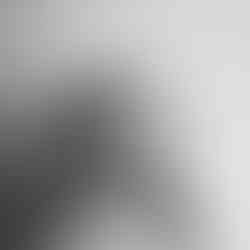Week 9+10: Challenging the Gaze, Part 2
- Lucie Nechanická
- Mar 30, 2021
- 3 min read
In the last post I shared and discussed my new body of work which aims to challenge the viewer’s gaze. In the new body of work I question the stereotypical ideals of beauty and representation of women in art and try to respond to them.
Men act and women appear. Men look at women. Women watch themselves being looked at. The surveyor of woman in herself is male: the surveyed is female. Thus she turns herself into an object of vision: a sight.
- Berger, John, 1972, Ways of Seeing
It is not new knowledge that women have been seen as a sight, an object to fantasize over. Depiction of the woman is designed to flatter the male spectator. These women are usually idealised, stripped off of their body hair and often portrayed passive and rarely looking directly at the spectator. I have written many times on this topic in my previous articles.
I have also mentioned that my work has often been perceived as female nudes because some of my photographs are exposing the body to the voyeuristic gaze of the viewer, regardless of my intention. However, long history of representing women as a sight definitely contributes towards labeling my work in such way.
In my new work I endeavour to take more control over the reading of my photographs so the viewer’s interpretation of my work can resonate better with my intention.
In this new series I questioned the beauty of form and played with the idea of returning the gaze back to the viewer.
I am not a skinny person but my arms and hands have always been very bony and veiny. Because they are not smooth and rather man-like, they add a layer of roughness to the photograph. Also the ambiguity of the form makes very unclear whether the form is male or female. From the aesthetic point of view I appreciate the combination of the rough arms and hands with the rough fabric when they meet. My intention was to look like an unspecified statue of an unspecified gender. (Fig. 1)
Fig. 1: Lucie Nechanicka, Untitled, 2020 In these two photographs (Fig. 2, Fig. 3) I was experimenting with disfiguring the body and making myself look like I was missing limbs. The aim of this experiment was questioning the body perfection that many artists strive for in photography and painting, too. Instead of striking a pretty pose for the photograph and presenting myself in the best possible way, I deliberately decided to do the opposite – I ‘mutilated’ the body and turned myself into an anti-sight.
Fig. 2: Lucie Nechanicka, Untitled, 2021
Fig. 3: Lucie Nechanicka, Untitled, 2021
Similarly, I played here (Fig. 4) with the idea of beauty and perfection of women in art. My intention was to create rather a sinister and unsettling portrait of myself. When I, as a viewer, look at the photograph, my eyes keep jumping back and forth from the breasts to the face. The sinister face juxtaposes the (normal looking) rest of the body, and I, as a viewer, cannot (and do not want to) believe that the face belongs to the same person as the breasts, because it really feels out of place.
Fig. 4: Lucie Nechanicka, Untitled, 2021
My intention in this photograph (Fig. 5) was to merge my body with the surrounding. I wanted to put the main focus on the sun coming through the blinds. I am only part of the whole, an element appearing in the image but at the same time not necessary for the image. The aim was to steer away the attention from the body and look at the image as a whole.
Fig. 5: Lucie Nechanicka, Untitled, 2021
Similar to the first photograph of this series (Fig. 1), in this couple of photographs (Fig. 6, Fig. 7) I aimed to create an ambiguous statue-like form, however, in this case the obscurity is emphasised by the reflection in the mirror. Again, I wanted to raise the uncertainty in regards to who the viewer is looking at; whether it is a female or a male form.
Fig. 6: Lucie Nechanicka, Untitled, 2021
Fig. 7: Lucie Nechanicka, Untitled, 2021
In my previous article I presented a photograph of me where I combined the front of my body with the back. I have decided to recreate the image as I thought the lighting conditions in the photograph make the image look far more different to the rest of the photographs in the series. This time I used natural light (as natural light is mutual for all photographs in this series), however I was not able to use the same environment as last time. Hence why the image below (Fig. 8) is only a prototype as I would like to recreate it again, but this time at the original place.
Fig. 8: Lucie Nechanicka, Untitled, 2021 References: Berger, John, Ways of Seeing, 1972



















Good reads for the recent articles :)